For those who are just starting out in the world of beer, the world of beer styles and varieties can be a bit complex. There are hundreds of different styles, each with its own history, details, and small aspects that differentiate them from other varieties. Names like Dortmunder, Märzen, or Kölsch may sound like Chinese to anyone who simply divides beers into blonde or dark, and so we are going to try to offer you a somewhat simple and basic classification that will help you understand a little better the different types of beer on the market.
It is not easy to classify all the beers in the world into one category or another. You have probably seen some of those images or maps of types of beer on the Internet or turned into posters, in which hundreds of bubbles with unpronounceable names are connected by arrows to others, relating different families to each other. We do not intend to explain each of these styles, but rather to offer some general outlines of each of the most popular beer styles in the world. Related Article: Origin Of Beer: Know Its History
Types of beer according to their fermentation
To begin with, we are going to divide all beers into three large groups according to their type of fermentation and the yeasts used during the process. In this way, we can distinguish between top-fermentation beers, also known as ale, bottom-fermentation beers or lager, and spontaneously fermented beers, popularly called lambic.
Bottom-fermented beers (lager)
Lager or bottom-fermented beer is possibly the most common beer style in the world if we only look at commercial beers. We have all had a lager at some point, whether it was a Heineken, a Carlsberg, or a Cruzcampo. We mistakenly tend to identify this name with any type of blonde beer from the bar counter, but that is not the case. Neither is the colour of the beer defining, since there are brown or black lagers nor does being a pale golden colour necessarily mean that it is a bottom-fermented beer.
What really sets these beers apart is the type of yeast used during fermentation. In this case, they are yeasts that ferment at lower temperatures, traditionally between 6 and 13º C. In addition, this fermentation process takes place in the lower part of the fermenter and the time it takes is much longer than that of an ale. This process is followed by another cold maturation process or lagering , during which the flavours are stabilised and the beer is cleaned of particles, giving rise to fresher and cleaner beers.
There are dozens of types of larger, impossible to list and describe due to lack of time and space, so we have selected those that we believe are the most common today. You may have drunk more than one of these styles without knowing it: Related Article: What Is Craft Beer And Everything You Need To Know
Pilsner
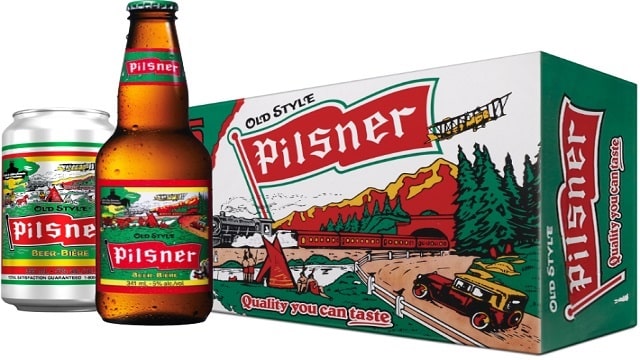
Pils, Pilsner, or Pilsener is probably the type of lager beer best known to the general public. As its name suggests, these beers originate from the Czech city of Pilsen (Bohemia), which many football fans will know for its team, Viktoria Plzen, a regular in the qualifying phase of the Champions League. Originally these blond beers were made with malts from the Moravia region and Czech hops such as Saaz, although today it is a style that has been exported to other countries. In addition to the Czech pilsners, with Pilsner Urquell and Staropramen being the most prominent examples, we must also highlight German beers such as Krombacher or Warsteiner.
Helles/Dortmunder
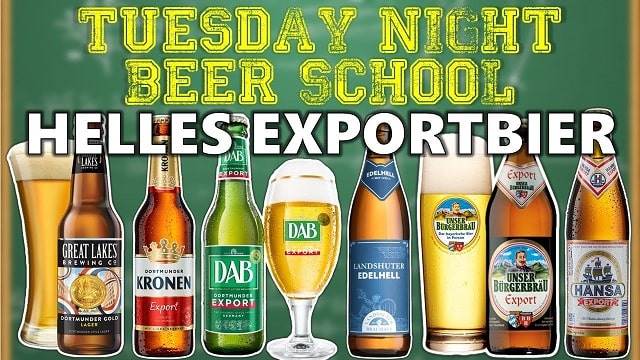
As we said above, the Germans also adapted the Czech pilsner style to their own taste and convenience. Derived from this style of blond lager beer, two styles of bottom-fermented beer emerged in two large German regions, Bavaria and Westphalia: Helles from the Munich area and surroundings, and Dortmunder from the Ruhr region. It was in the 1870s when several brewers joined together in Dortmund to begin brewing this style under the name Dortmunder Union and under the supervision of master brewer Fritz Brinkhoff. Seeing the success of this style, the Spaten Brewery in Munich tried to do the same, giving rise to Helles, which we could directly translate as light or clear beer, and which was soon adopted by many other Bavarian brewers such as Hofbräu, Augustiner or Löwenbräu. Today, all of these producers continue to make beers of this variety.
Mars(Oktoberfest)
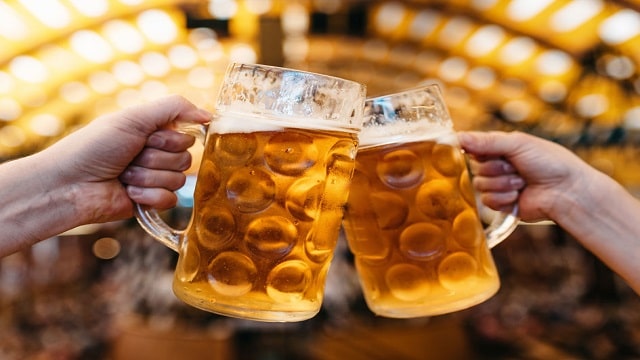
We have just mentioned some of the great brands from the city of Munich, such as Spaten, Hofbräu, Augustiner or Löwenbräu, to which we should add Paulaner or Hacker Pschorr. They are also the main players in the elaboration and development of another of the most popular bottom-fermented beer styles in the region of Bavaria. Märzen, as their name suggests, are beers traditionally brewed in spring, specifically in the month of March, to be stored during the hot summer months and consumed at the great autumn beer festivals such as the Oktoberfest. Unlike Helles, these do not have to be blond or light beers, but their colour range extends to dark brown. Although we have mentioned the 6 official manufacturers of Oktoberfestbier, the Märzenbier style is brewed all over the world, not only in the city of Munich and the region of Bavaria. In fact, in Spain, we have a very good quality märzen such as Turia.
Bock(Haake Beck)
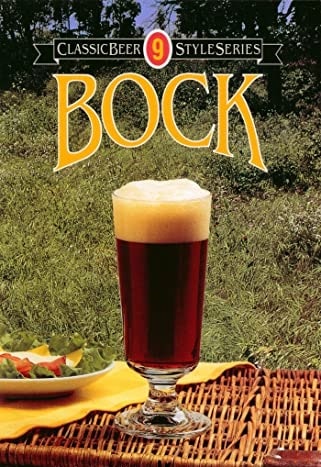
Another very common bottom-fermented beer style also has its historical origins in Germany, although this time in the town of Einbeck, in Lower Saxony. We are talking about the original Bock, and all its best-known variants ( maibock, doppelbock, eisbock, or weizen bock, to name a few examples). These are traditionally much stronger beers than the lagers we have seen so far, even in their mildest variety (around 7%), although eisbocks can even exceed 15% alcohol content. This is a style traditionally associated with religious festivals that involved fasting, and which monks consumed as sustenance during the long periods in which they did not eat solid food. It is understandable, therefore, that it is a full-bodied and very nutritious beer. The quintessential example of a bock beer is Einbecker Ur-Hell, although Paulaner Salvator ( doppelbock ) and Aventinus Weizen Bock are also worthy of mention. In Spain, we also have good examples, such as the Basque beer Olbea Bock or the Manchegan Dawat 18.41, an Eisbock whose alcohol content is not very difficult to guess.
Schwarzbier
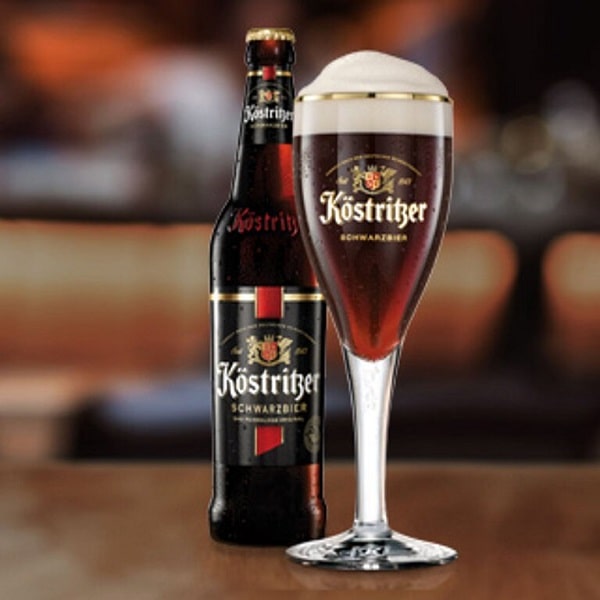
The Schwarzbier style, literally black beer in German, is a clear example that not all lager beers are blond, nor are all black beers ale in the Stout or Porter style. Like the latter, the use of very roasted malts results in very dark beers, totally opaque, with aromas of chocolate and coffee, although less dense and fresher. This particular style has its origins in medieval Germany, specifically in the regions of Thuringia and Saxony, although it soon spread to the rest of Central Europe, giving rise to a sister variety, the Tmavy. The quintessential Schwarzbier remains the Köstritzer, although in Spain we have examples of commercial brands of blond lager that try to introduce beers of this style to the market, as is the case of Mahou Negra.
Vienna
We finally move from Germany, although not from its area of influence, to find another style of lager that differs from the classic prototype of blonde beer. Viennas could be defined very roughly as the equivalent of the classic amber ales in a bottom-fermented version: beers with an amber colour tending towards copper, what we would commonly call toasted beer. As you may have deduced from its name, this style was originally developed in the Austrian capital by the famous brewer Anton Dreher, but where it has achieved the most fame is in different Latin American countries such as Brazil or Mexico where they try to introduce their own reinterpretation of the most classic styles. Therefore, it is not surprising that the Brazilian Bierland Vienna is considered one of the best beers in the world of this style, or that the Negra Modelo triumphs as a Mexican product. But if there is a Vienna that everyone recognises today, it is the Samuel Adams Boston Lager.
Top-fermented beers (ale)
If we previously mentioned that lagers were the most common beers among commercial brands, we could say that ales or high-fermentation beers are within the craft beer sector, since these are usually the ones that anyone who is starting out in this world starts with. Firstly, because they do not need a maturation or lagering time, nor the necessary equipment for this purpose, and because the fermentation time itself is much shorter, allowing for practically immediate results.
In this case, and as you may have already imagined, fermentation takes place in the highest part of the liquid and the yeasts involved in the process begin to act at temperatures much higher than in lagers. Now we would be talking about yeasts that ferment between 15 and 24º C, giving rise to beers that are less fresh but much more aromatic and with more character than those of bottom fermentation.
And if we were saying before that there are dozens of larger styles, in the case of ales, we might be underestimating and we should say that there are hundreds. There are all kinds and all imaginable colours, although in our opinion, these are the most important.
Pale Ale
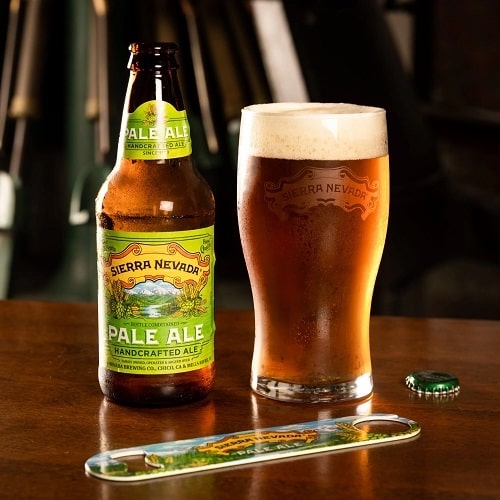
To speak of a Pale Ale alone may be too generic, but it is necessary to include this substyle in our list since it is the father of many other variants that we could not understand without mentioning it. The term first appeared at the end of the 17th century and beginning of the 18th century to describe those high-fermentation beers that used pale malts for their production, giving rise to blond beers with a golden appearance. From there, countless varieties emerge, with a wide range of bitterness and alcohol content, including English Pale Ale, American Pale Ale, Biére de Garde, or even IPA or India Pale Ale, one of the most popular beer styles in the world even today. Virtually all craft beer brands have a Pale Ale in their catalog, although among the English-style ones, we could highlight the Bass, and among the American ones, the Sierra Nevada Pale Ale.
IPA(Brooklyn East India Pale Ale)
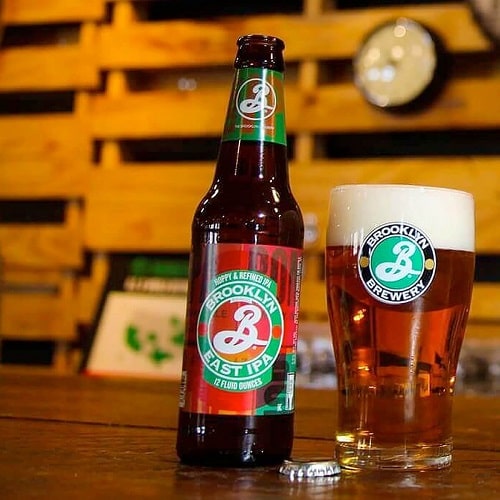
What can we tell you that we haven’t already told you about the IPA or India Pale Ale style? Within the Pale Ales, IPAs are those beers that are heavily hopped, more alcoholic, and bitter than their parent category. History tells us that this style was born in 18th century Great Britain as a solution to ensure that beers arrived in the best possible condition to the Asian colonies. At that time, the only way to protect the beer from the inclemency of the journey and the extreme temperatures to which it was subjected was to add an extra dose of hops, which would act as a natural preservative and alcohol. Already in the 1970s, these beers had a revival in the United States that we are still experiencing today, as it has become the most popular type of beer in the world that practically all craft manufacturers produce, either in its American version (with more citrus hops) or in its British version (with noble European hops). To cite a notable example we could mention the Brooklyn East India Pale Ale.
Season(Sorachi Ace)
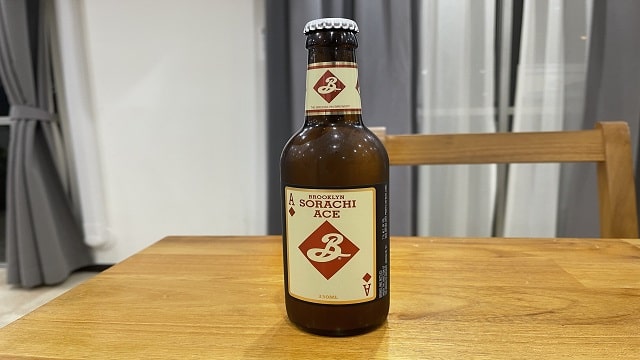
Another sub-style of pale ales, originally from Wallonia, Belgium, has become quite popular in recent years thanks to its rebirth among American craft beers. We are talking about Saison or Farmhouse Ales, top-fermented beers with a lot of character and an alcohol content of around 7%, which were traditionally produced during the coldest months of the year and served as supplies for temporary workers or saisoniers on farms. Today, some examples of this style of beer could be the famous Saison Dupont, considered one of the best beers in the world, or Sorachi Ace from Brooklyn Brewery.
Brown Ale
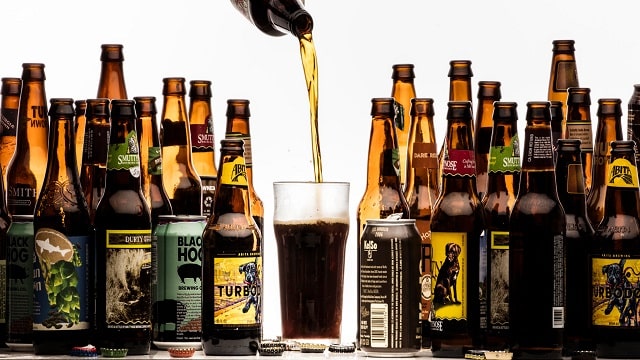
We leave behind the ales that use pale malts to concentrate momentarily on those that use more roasted malts, giving rise to beers that range from coppery to dark brown in colour, with caramelised, chocolatey, and nutty flavours. Brown Ales have their origins in England at the end of the 17th century, although their popularity has been intermittent over the years until they had a boom in the early 19th century with the introduction of Mann Brown Ale and the famous Newcastle Brown Ale. As almost always, it was the North Americans who gave this style its second youth, with Samuel Adams Brown Ale and Brooklyn Brown Ale standing out.
Belgian Ale
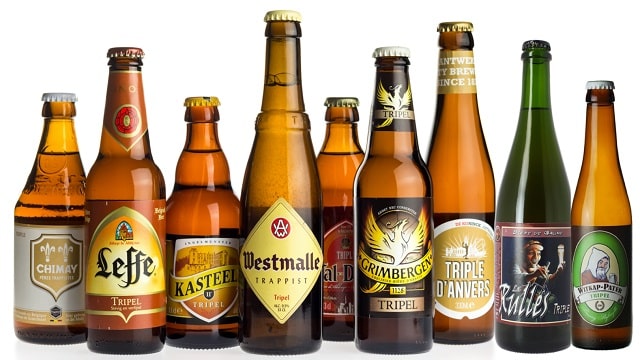
Unfortunately, this is probably the vaguest style of all those we will name in this article. Is there a single Belgian style? Of course not. In fact, the Saisons mentioned above could easily be in this category. But it is the easiest way to group all those beers produced or not in Belgium that follow common guidelines such as the use of aged hops to give their beers a sweeter and less bitter touch, with very dense foams and even spicy flavors. We do not distinguish between blond or toasted beers, between abbey or Trappist beers, between dubbel, tripel, or quadruple. For reasons of space and convenience, we include everything from Belgian Golden Ales to Belgian Strong Ales, and to try to include in the same category all those beers that have recently been named intangible heritage of humanity by UNESCO. Leffe, Duvel, Westvleteren, Westmalle, Chimay, Orval, Affligem, Achel… All their brands have a place in this space.
Witbier
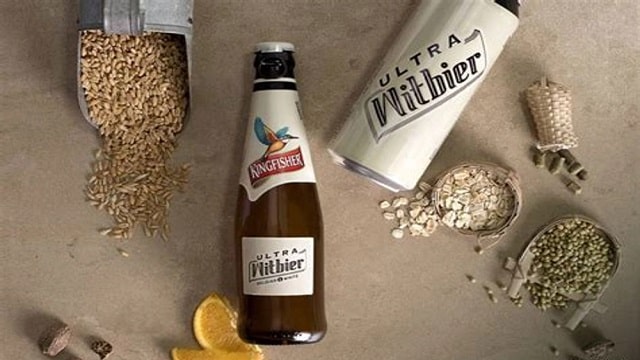
Witbier could easily be included in the previous category, but we have considered it appropriate to remove it from there due to its particularity of being a wheat beer. But not a wheat beer like the Paulaner or Franziskaner that we are so used to in Spain, but a Belgian-style beer also known as white beer. This light color is due to the use of unroasted malts, giving rise to cloudy but refreshing, citrus, fruity, and practically floral beers. Many of them incorporate a spicy or peppery touch with the addition of orange peel or coriander. Although many Belgian brands have their own version of Witbier, the famous one is undoubtedly Hoegaarden, which managed to rescue this style from oblivion and return it to popularity.
Weizenbier
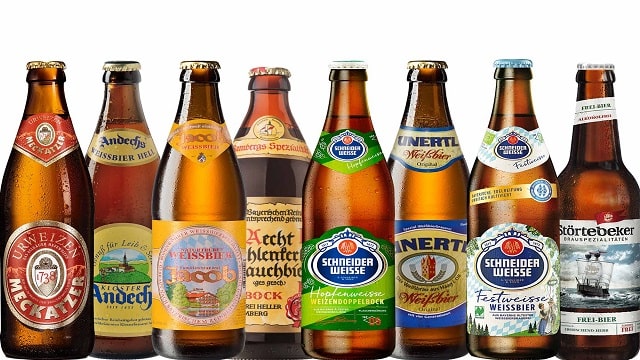
And if we have just mentioned Belgian-style wheat beer, it would not be fair not to do the same with its German equivalent. Weizenbier, originally from Bavaria, are top-fermented beers in which a portion of the barley malt is replaced by wheat malt, and special hops are used for fermentation, which give it that characteristic banana and clove flavor. Within this style, we can find Hefeweizen (in its most natural and unfiltered form), Kristallweizen (the crystalline and filtered version of this style), or Dunkelweizen (a darker version due to the use of roasted malts). It goes without saying that Paulanaer Hefe-Weissbier and Franziskaner Hefe-Weissbier are very popular examples of this style, although we should not underestimate Weihenstephaner Hefeweissbier or Ayinger Bräu Weisse either.
Porter/Stout
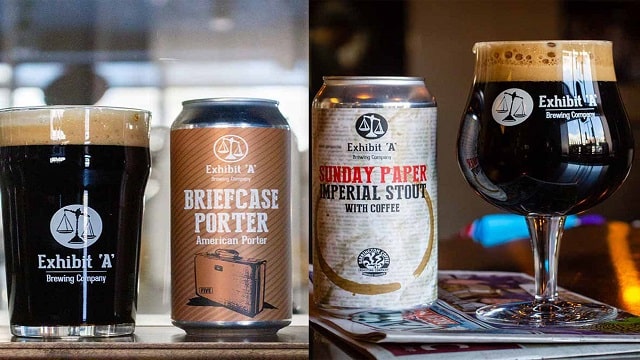
If a few lines above we said that Schwarzbier were bottom-fermented black beers with aromas of coffee and chocolate, Porter and Stout are more or less the same thing but in top fermentation (a very basic simplification, but so we understand each other). On this occasion, these beers have their origin in the British Isles in the mid-18th century and, although today we usually use the terms Porter and Stout independently, the second of them originally referred to a stronger version than the traditional Porter . They are usually very dense and opaque beers, and from them a multitude of variants have emerged depending on the place or the purpose for which they are produced, playing with a wide range of alcohol contents. Thus, over time, the Russian Imperial Stout appeared a black beer made to take to the court of Catherine II of Russia, the Oyster Stout or the Chocolate Stout. As a curiosity, Balinese porters, dark beers traditionally brewed in the Baltic countries and also Poland, use bottom-fermenting yeasts and therefore cannot be considered ales. And of course, the most famous beer of this style worldwide is and always will be Guinness.
Spontaneously fermented beers (lambic)
It may not be the most popular beer style in Spain, but spontaneously fermented beers have their loyal following. This is a variety native to Belgium, specifically the southern region of Brussels known as Pajottenland. If in lagers we were talking about the addition of bottom-fermenting yeast strains and in ales, we were talking about top-fermenting yeast strains, in the case of lambics, no type is added. On the contrary, fermentation is carried out by exposing the wort to the wild yeasts typical of the region, in this case, the Zenne Valley, to produce spontaneous fermentation.
The name lambic comes from the municipality of Lembeek, halfway between Brussels and Charleroi airport, which you will surely have visited if you have travelled to the Belgian capital. These beers use both barley and wheat malts, as well as aged hops which, despite having lost all their aroma and bitterness, continue to act as a preservative. There are several substyles within lambics, although all of them are characterized by being dry and quite sour beers, more similar to wine or cider than to a typical beer.
Gueuze
Gueuze is possibly the most popular sub-style of all lambic beers. It is basically the result of mixing a young lambic (barely one-year-old) with another lambic that has been matured for a longer time (up to three years). Because the sugars in the young beer have not yet fully fermented, it leads to a second fermentation in the bottle that creates a lot of carbonation and foam, as if it were a cava (in fact, it is usually bottled in bottles similar to those of champagne). This type of beer can continue to mature for decades in its respective bottles, reaching exorbitant prices on the market. Among the most popular Gueuze beers made today are those made by Timmermans, Lindemans, or 3 Fonteinen.
Lighthouse
Faros could be defined as a variant of Gueuze to which brown sugar or, failing that, molasses or caramel is added, resulting in a very sweet lambic beer. Originally, this extra sugar was added directly to the glass at the time of serving, avoiding a new fermentation that would give the beer a higher alcohol content. Today, and with the same purpose, the drink is bottled, sweetened, and then pasteurized to prevent this second fermentation in the bottle. Although it is a variety that is slowly disappearing, it is still quite popular among Belgians, with factories such as Cantillon, Boon, or Timmermans as its leading exponents.
Kriek
As we have mentioned before, lambic beers use aged hops that do not add aroma or bitterness to the drink. A fairly common way to give a more aromatic touch to these spontaneously fermented beers is to use different types of fruit, including raspberries, peaches, blueberries, or strawberries. But, without a doubt, the most popular fruit for this type of beer is the sour cherry or Morello cherry, giving rise to what is known as Kriek beers, due to the name given to this type of cherry in the Flemish language. Brands such as Timmermans, Mort Subite, or Belle-Vue produce some of the most notable Kriek beers today.
